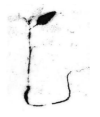Pesticides: Behavior in Agricultural Soil and Plants
- PMID: 34500803
- PMCID: PMC8434383
- DOI: 10.3390/molecules26175370
Pesticides: Behavior in Agricultural Soil and Plants
Abstract
This review considers potential approaches to solve an important problem concerning the impact of applied pesticides of various classes on living organisms, mainly agricultural crops used as food. We used the method of multi-residual determination of several pesticides in agricultural food products with its practical application for estimating pesticides in real products and in model experiments. The distribution of the pesticide between the components of the soil-plant system was studied with a pesticide of the sulfonylureas class, i.e., rimsulfuron. Autoradiography showed that rimsulfuron inhibits the development of plants considered as weeds. Cereals are less susceptible to the effects of pesticides such as acetamiprid, flumetsulam and florasulam, while the development of legume shoots was inhibited with subsequent plant death.
Keywords: agricultural food products; distribution multi-residual method; pesticides.
Conflict of interest statement
The authors declare no conflict of interest.
Figures









References
-
- Zikankuba V.L., Mwanyika G., Ntwenya J.E., James A. Pesticide regulations and their malpractice implications on food and environment safety. Cogent Food Agric. 2019;5:1601544. doi: 10.1080/23311932.2019.1601544. - DOI
-
- Popp J., Pető K., Nagy J. Pesticide productivity and food security. A review. Agron. Sustain. Dev. 2013;33:243–255. doi: 10.1007/s13593-012-0105-x. - DOI
-
- Zhang W. Global pesticide use: Profile, trend, cost/benefit and more. Proc. Int. Acad. Ecol. Environ. Sci. 2018;8:1–27.
-
- Pimentel D. Pesticides and pest control. In: Peshin R., Dhawan A.K., editors. Integrated Pest Management: Innovation-Development Process. Springer; Dordrecht, The Netherlands: 2009. pp. 83–87.
-
- Zhang W.-J., van der Werf W., Pang Y.A. simulation model for vegetable-insect pest-insect nucleopolyhedrovirus epidemic system. J. Environ. Entomol. 2011;33:283–301.
Publication types
MeSH terms
Substances
LinkOut - more resources
Full Text Sources
Medical

